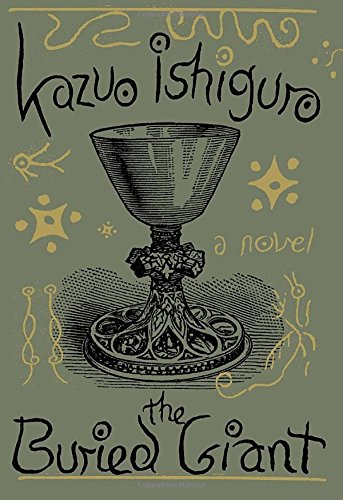The Buried Giant
In considering the synopsis of his seventh novel, The Buried Giant, long-time fans of Kazuo Ishiguro’s restrained and always-compelling prose may find themselves puzzled at what seems like a departure for him: in 6th-century Britain, in a primitive land of fog, rain, ogres, and dragons, an old married couple decides finally to visit a son they haven’t seen in years. They cannot remember what caused their separation, and they’re not even sure which village he lives in. In fact, none of their fellow villagers seem able to form or keep memories, nor do they notice the lack. Nonetheless, Axl and Beatrice are determined to overcome the fog of forgetfulness as they set out on a fraught journey. Along the way, they pick up travelling companions who are on quests of their own, and begin to recover fragments of their lost memory, little of it comforting. Together, they find answers to the mysteries that have plagued them and their country for an age, though the discovery seems destined to unleash even greater woe. This is an Arthurian fairy tale for grown-ups, and one that asks quietly pointed questions, such as how much of a person’s identity is held in the memories she carries, or whether, when it comes to seeking justice—or is it simply vengeance?—for a great wrong, it isn’t better for everyone to let sleeping dragons lie.
In Ishiguro’s hands, the tale seems less fantastic than simply of another time, when ogres and pixies were part of the natural landscape, much like wooly mammoths on the ancient Siberian plain. Characters interact with a formality that seems almost Kabuki-like, but it feels organic to the time and place. And by now, Ishiguro’s fans should no longer be surprised at how he can still surprise us.










